Are you a Quiet Speculation member?
If not, now is a perfect time to join up! Our powerful tools, breaking-news analysis, and exclusive Discord channel will make sure you stay up to date and ahead of the curve.
Last week I introduced my new submission for Grixis Control, Fall 2016 style. My reasons for revisiting the archetype were simple: Modern is polarizing, Grixis hasn’t been putting up results lately, and the deck is freakin' awesome. If you missed last week, be sure to catch up to speed first. That article framed most of the discussion around the notion of context, and why I felt Grixis would be successful in this specific metagame, so non-Grixis players would be able to take my process and hopefully apply it to their own archetypes. Today, I’ll be building upon last week’s work, talking specifically about my list’s choices, how it compares to other variations, and how it lines up against the format. Let’s go!
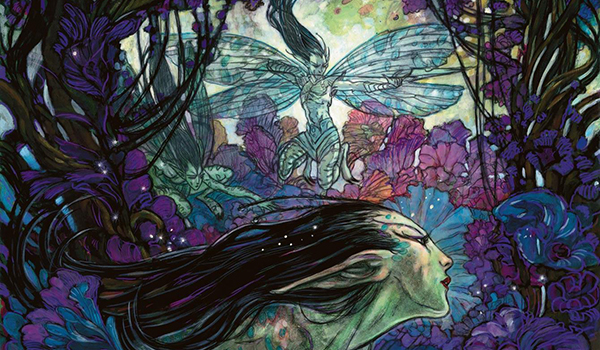
To start, here’s the list I proposed last week for reference.
Grixis Control 2.0, by Trevor Holmes
Last week I pointed to the general aggression of the format as the cause of my interest in playing this particular version of Grixis Control. Ever-present zero- and one-cost creatures have me unenthusiastic about Terminate and expensive card advantage spells; hence the overall efficiency and reduction in converted mana cost among my choices. These changes leave us vulnerable to dedicated midrange and control strategies, but in return we gain smoother gameflow and increased levels of interaction against most of the aggressive and combo elements in the format.
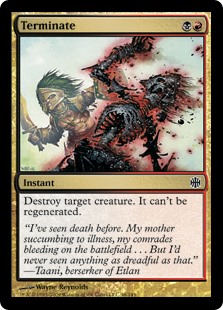 When I published my article, I expected some feedback regarding the similarities between my list and recent Grixis Delver lists that have performed well. Cutting expensive spells, trimming high-cost threats in favor of cheaper options, and gaining access to more burn elements are all primary deviations that signal a shift in deckbuilding from Grixis Control towards Delver (besides the inclusion of Delver of Secrets, of course).
When I published my article, I expected some feedback regarding the similarities between my list and recent Grixis Delver lists that have performed well. Cutting expensive spells, trimming high-cost threats in favor of cheaper options, and gaining access to more burn elements are all primary deviations that signal a shift in deckbuilding from Grixis Control towards Delver (besides the inclusion of Delver of Secrets, of course).
This insight got me thinking about the ever-present question of identity, and the challenges it presents primarily to reactive strategies with historical overlap in deck composition. If we’re playing 67-71 of the same cards as Grixis Delver, can we really call ourselves Grixis Control? Where is the line between doing something "different" and just having a slightly shifted version of another strategy? Especially in reactive strategies, does our deck composition influence our primary gameplan directly, or should we let matchups and the metagame sponsor that change?
These are complicated questions to answer, but I think they're important to recognize, at least. It's tempting to just plow ahead with the first brainstorm that seems to solve the format, but it's important to be honest with yourself about your own ideas. This includes past choices in deck composition. As a "tuner," I’m constantly struggling to remove from the design process my own preconceptions about the format and specific card quality, in the hopes of reaching a clearer conclusion about what cards I should be playing.
[wp_ad_camp_1]
Taking a Page from Delver
Theoretical thinking aside, the real question I’m asking myself right now is whether I should be playing Grixis Delver. Historically, Grixis Delver has performed better in high-level events than Grixis Control, and is considered by many to be the better deck. After a week of tuning and adjusting, I’ve come to the conclusion that I’m correct not to play Delver of Secrets, but I am attempting to incorporate elements of what makes Grixis Delver a powerful deck into my own strategy. Here's a typical list from a recent IQ:
Grixis Delver, by Gabriel Womack (3rd, SCG Super IQ Atlanta)
Delver is proactive, synergistic, a strong choice against a field with combo elements, and powerful when we need to end the game quickly. It benefits from a synergistic gameplan that isn’t reliant on one specific card, and it can adapt to fit different draws or matchups easily. 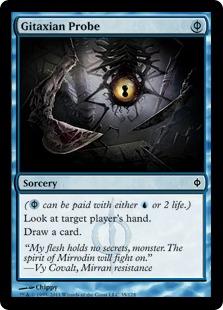 In addition, it can more easily interact with other aggressive strategies and benefits from an increase in overall mana efficiency compared to the "bigger" control lists.
In addition, it can more easily interact with other aggressive strategies and benefits from an increase in overall mana efficiency compared to the "bigger" control lists.
The downside? Grixis Delver decks play Delver of Secrets. I have trouble finding another card that's simultaneously as awkward and potentially game-losing as it is central to an archetype’s strategy. Delver of Secrets commits us to an aggressive line that the rest of our deck isn’t entirely built on pursuing. It's much worse on the draw, especially in aggressive pseudo-mirrors. It promotes linear deckbuilding with the inclusion of spells like Gitaxian Probe and Spell Pierce, which take away from the strengths of our color identity: reactivity, card advantage, and power. Let’s not talk about when it doesn’t flip.
Grixis Delver decks win a large percentage of their games without ever drawing and casting Delver itself, which leads me to believe that the card isn’t as central to their strategy as is widely thought. What’s stopping us from adopting the strengths of Grixis Delver, without committing ourselves to the radical changes they force upon their own lists by playing Delver of Secrets? To wit:
Grixis Control Tuned, by Trevor Holmes
After some more testing, this is where I’m at currently with Grixis Control. As Zach Allen suggested on Twitter, Collective Brutality is a solid card worthy of discussion in Modern, especially in Grixis Control. After some testing with the card, I’m convinced it has a home here. While I can definitely see it experiencing varying levels of play depending on metagame, currently the Modern context has never been better for Collective Brutality.
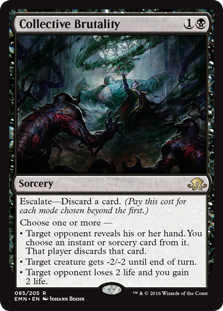 Lifegain is hard to come by in our colors, and Collective Brutality has been excellent against Burn in testing. Killing a Goblin Guide, taking a 3-4-point burn spell, and giving us an almost-free Countersquall for two mana (and two cards out of our hand) isn’t the absolute best on rate, but it's excellent when we factor in mana efficiency. Remember that in the Burn matchup all we’re looking to do is trade cards for life, so discarding a spell to drain for two is over a full card’s worth of value anyways. That we’re getting it for no extra mana is just icing on the cake, as that frees up our later turns to Dispel and Negate away without fear of wasting mana on cards left in hand.
Lifegain is hard to come by in our colors, and Collective Brutality has been excellent against Burn in testing. Killing a Goblin Guide, taking a 3-4-point burn spell, and giving us an almost-free Countersquall for two mana (and two cards out of our hand) isn’t the absolute best on rate, but it's excellent when we factor in mana efficiency. Remember that in the Burn matchup all we’re looking to do is trade cards for life, so discarding a spell to drain for two is over a full card’s worth of value anyways. That we’re getting it for no extra mana is just icing on the cake, as that frees up our later turns to Dispel and Negate away without fear of wasting mana on cards left in hand.
Outside of the Burn matchup, Collective Brutality is actively great against every aggressive deck and solid against combo and midrange/control as well. For a Grixis "Control" deck we’re playing a surprising amount of burn, and the two-point drain is better here than it would be in other decks. Between this, the four Kolaghan's Command, Lightning Bolt, and Snapcaster Mage, we have a surprising amount of non-creature surprise damage, and it’s not even a stretch to call Vendilion Clique "Bolts 5-6" either.
With this in mind, I’ve begun testing out Burst Lightning in place of Pillar of Flame. Wanting to kick it should come up more than the exile clause in theory, especially since we have access to two Anger of the Gods to deal with Kitchen Finks in those specific matchups. Burst Lightning gives us a fifth five-mana instant speed option in addition to the normal Snapcaster Mage/Kolaghan's Command play, and I could definitely see the extra two damage mattering in many games.  Remember that yes, you can pay the kicker cost on flashed-back spells. Seven mana is a lot, but we could also potentially cast this off a flipped Jace, Vryn's Prodigy, in which case we would only need the easily attainable five. Burst Lightning is a late addition, and I’ve yet to see a situation where I’m glad I had this over Pillar of Flame, but then again I’ve yet to find myself wanting Pillar of Flame when I drew this too.
Remember that yes, you can pay the kicker cost on flashed-back spells. Seven mana is a lot, but we could also potentially cast this off a flipped Jace, Vryn's Prodigy, in which case we would only need the easily attainable five. Burst Lightning is a late addition, and I’ve yet to see a situation where I’m glad I had this over Pillar of Flame, but then again I’ve yet to find myself wanting Pillar of Flame when I drew this too.
Jace, Vryn's Prodigy is a pet card, and I realize this completely. That's why I’ve gone from playing a playset in previous lists, down to two in the original concept for 2.0, and finally down to a singleton copy in this list. The card has always been excellent, but the format has just moved away from the front half of the card. I say this because the flipped side is still excellent—shrinking small creatures, distracting big ones, providing extra copies of previously cast spells. I still like the card, I just don’t need the late-game power it provides and I’m much more interested in never drawing two copies at once. In this deck, in this format, Jace, Vryn's Prodigy is cast on turn four or five at the earliest. We’re just too busy doing more important things. Sorry, buddy.
Tweaks to the Sideboard
As for the sideboard, the Yixlid Jailers are gone, replaced (along with Slaughter Games) by Surgical Extraction. Just drawing one of these against Dredge should be enough to win (take their Prized Amalgam and we should be fine from there). Yes, I know they have other stuff, but we have big delve creatures and removal spells to go with them. As long as we don’t open ourselves up to a blowout Rally the Peasants, we shouldn’t have a problem.
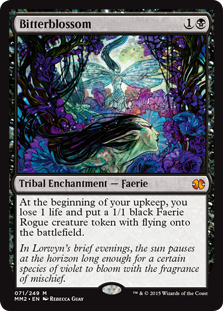 I’m more interested in how we react to the increased graveyard hate that is almost assuredly coming with Dredge’s renewed increase in format market share. Five delve creatures is just enough to make it awkward to defend against graveyard hate ourselves. It’s just really tough to ignore Rest in Peace—it may be card disadvantage for them, but it still does enough against us that we can’t laugh in their faces when they cast it. To hedge, I’m diversifying my threats post-board, with my old favorite in Bitterblossom making a return.
I’m more interested in how we react to the increased graveyard hate that is almost assuredly coming with Dredge’s renewed increase in format market share. Five delve creatures is just enough to make it awkward to defend against graveyard hate ourselves. It’s just really tough to ignore Rest in Peace—it may be card disadvantage for them, but it still does enough against us that we can’t laugh in their faces when they cast it. To hedge, I’m diversifying my threats post-board, with my old favorite in Bitterblossom making a return.
I’m not sold on this choice, as we’re not playing Bitterblossom against Burn or most of the combo decks in the format. Still, I’m bringing it in against Affinity, Infect, all the midrange and control matchups, and probably against Dredge as well if I have room. An easy way to generate free value/attackers/blockers is hard to laugh at, but I wonder if it does enough. Jund is still the third most-played deck, however, and this card is excellent against them. Watch them squirm as they hold onto their useless Liliana of the Veil, and take pride in the fact that you made them keep in their garbage Abrupt Decay that does nothing against our delve creatures.
Conclusion
I've called Grixis Control "the blue mage’s Jund" in the past, so it makes sense that we would eventually end up modeling our Control list after Grixis Delver now. Grixis players of all types have always recognized how their specific choices place them on a spectrum, one that shifts with the changing tides of the metagame. If you choose to partake in the "dark side" of Control, understand that taking up this mantle brings with it a responsibility to disassociate yourself from presumptions. Be sure never to lose track of your identity as the world shifts around you. Thanks for reading, and I’ll see you next week.
Trevor Holmes
The_Architect on MTGO
Twitch.tv/Architect_Gaming
Twitter.com/7he4rchitect






If you find that BB does well in this meta, would you consider moving to a maindeck BB/Spellstutter package?
Hi! I’m Gabe and piloted the above mentioned delver list. I wish grixis could move away from delver due to the inherent variance but I feel like the potential upside of the threat of a blind flip combined with the mitigated downside of a lotus petal or actual land make it a necessity. I agree that delver decks win a large percentage of games without ever drawing the namesake card, however, if the color combination promotes interactivity, card advantage and power I would say spell pierce and gitaxian probe enable all of the above.
Grixis control is an idea that I have sketched many times as a former twin and blue moon pilot. I would love to jam Pia and Kira, Kalitas or even Liliana but in this format of 1 and 0 cmc threats you are dead before you resolve them. Grixis allows you to play your own 1 mana threats while giving you access to answers for every strategy.
What do you think of grixis twin?
With the bitterblossom art on the main page and the top of the article here it was pretty disappointing to see single copy in the board at the big unveiling. I mean id be surprised for the card to shine in grixis control but I thought thats where the article was gonna go – the grixis lingering souls or some such.
Hm, that was in retrospect perhaps less than representative of the article. That was my bad. I largely chose it just because we’d used most of the stock Grixis cards by now and that Rebecca Guay art is amazing.
I agree. The art is amazing.
From what we saw of the Open today, I keep thinking there’s a “bigger” build of grixis, aligned more closely with the UWR “Flash” builds–playset of snaps, clique or two, one or two torrential gearhulks, bolt/sudden shock/terminate/slaughter pact/mana leak/spell snare/remand/electrolyze. Extractions and the sheer quantity of removal should make the matchups vs infect/affinity/dredge more than reasonable. Ancestral vision/snapcaster mage/creeping tar pit should make BGx do-able, especially post board. Combo should be fine post board with discard and countermagic; extractions also do double duty here as well. I just wonder what happens if grixis moves away from the more “proactive” build with tap out delve creatures and discard in favor of a more flash-centric gameplan, with instant speed removal and countermagic supplemented by discard and serum visions.
I think the main problem with grixis is that it has simply been too established in the same old pattern for too long.
All decks need to split up into different types, so that at least one get’s to take out the curent meta.
I have a rogue build that I’ve tested against at least 43 different types of moderndecks, 3-4 month’s ago, and the things it draws seem to work, except that I’m a lousy player at tournaments, making too many hasty decisions, only to regret them seconds later.
It’s design is radically different from the usual grixis-lists, but it’s well-functioning, just a few month’s out of date.
http://www.mtgvault.com/wickeddarkman/decks/modern-tournament-shriekers/
It might not be the better grixis design , but it has the surprise element going for it.
Regards, wickeddarkman.